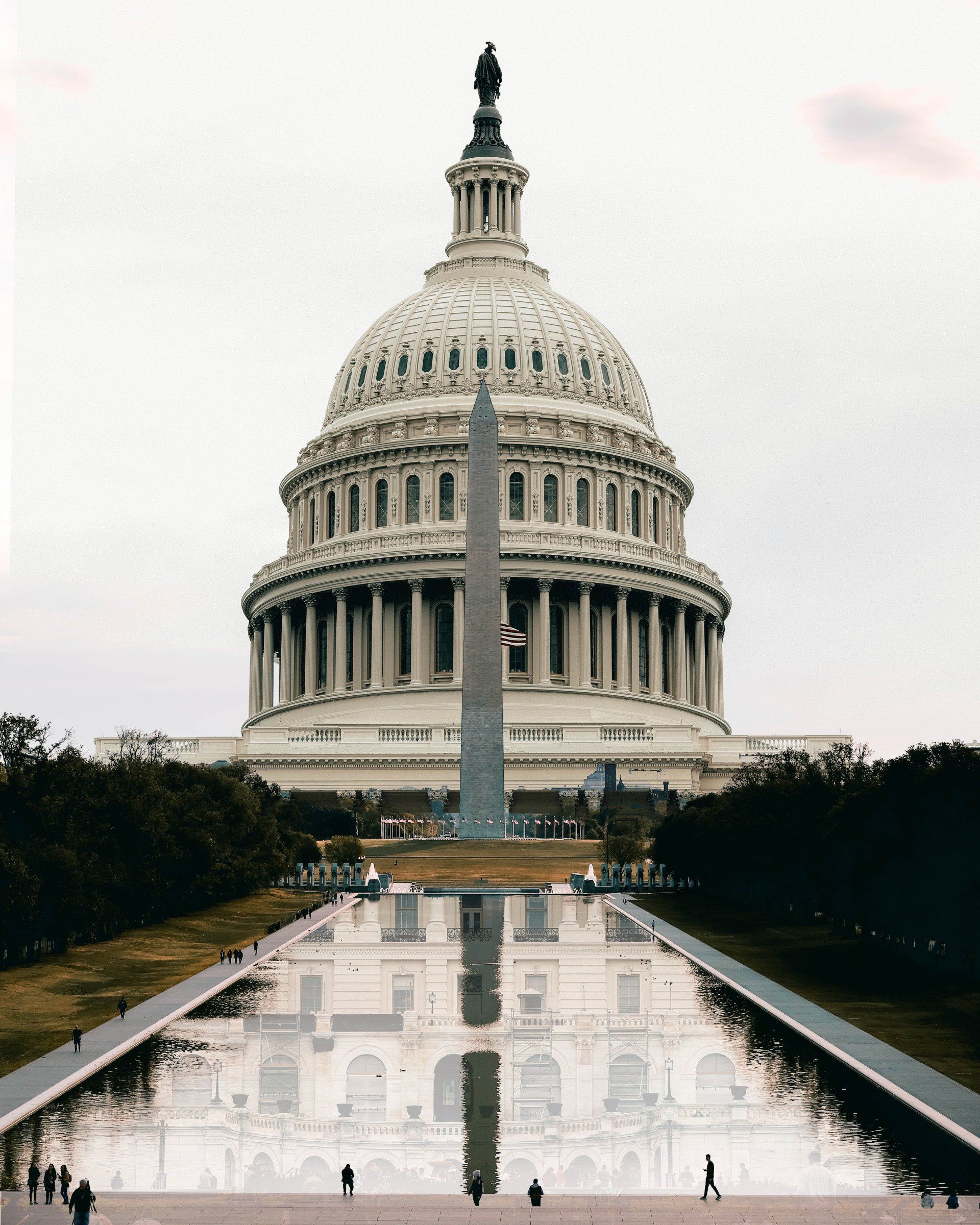“A Perfect Storm": Uncertainty on Federal Funding and National Defense Priorities for the next 60 Days
On Friday, March 11th, 2022, all Federal government funding ends. While a government shutdown is not an option, there are key decisions in the next 60 days on whether to continue last year’s appropriations levels until the Fall, consider an Omnibus all-encompassing bill, or pass individual bills per Department and agency. Despite the Administration’s earlier request for over $4.1 Trillion to support all federal agencies, including the DoD, Congress did not adhere to a deadline of September 30, 2021 (the end of the Fiscal Year), and opted to “kick the can down the road”. They extended spending at last year’s level until December 3rd and then again until February. Adding to this uncertainty, after the President’s State of the Union on Tuesday, March 1, 2022, the Congress will receive the Fiscal Year 2023 Federal budget requests for this coming year’s cycle. Soon thereafter, staff within each agency will set out funding levels and programs for the next Fiscal Year (2024), due at the Office of Management and Budget (OMB) by Thanksgiving. This will be four fiscal years of allocations, a true “traffic jam” for those who seek to influence federal programs and funding.
This unusual situation greatly impacts decisions at all levels of government, with a special adverse impact in the Department of Defense (DoD) and related national security agencies. As of this article, the DoD Fiscal Year 2022 Appropriations legislation has yet to pass the Senate. Those seeking to propose new military policies, allocations, or weapon system projects last year were focused on the National Defense Authorization Act (NDAA) for FY22, the Defense Appropriations bill for the same Fiscal Year (FY), and Military Construction Appropriations. This issue generated a unique public hearing on January 12, 2022 by the House Appropriations Defense Subcommittee in which all four military branches’ witnesses presented their concerns on a lack of FY funding which would restrict new production of needed weapon systems and have a negative ripple effect throughout our national defense structure. Most all recent NDAA’s have been passed and signed into Public Law by the President well within the FY Fall deadlines. The following are examples of the last four years:
Fiscal Year
NDAA
DoD Appropriations
2022 PL117-81—Dec. 27, 2021 -
2021 PL116-28—Jan. 1, 2021 PL116-260—Dec. 27, 2020
2020 PL116-92—Dec. 20, 2019 PL116-93—Dec. 20, 2019
2019 PL115-232—Aug. 13, 2018 PL115-245—Sept. 28, 2018
Historically, since 1976, there have been instances of funding “gaps” in allocating appropriations bills, and in some cases “shutdowns”. These “shutdowns” usually only extended for a week or two, the longest being 21 days. However, even during the longest “shutdown”, the DoD Appropriations bill was not impacted as it passed Congress by December of that year (PL 104-61, Dec.1, 1995). Uncertainty in production schedules, federal contracts, procurement needed, planning on construction decisions, as well as a whole host of impacts on employees, businesses and the ripple effect on the economy can also be directly attributed to this delay. Impacts are felt up and down the governmental structure, reaching the state and local levels as well. The following is an example of the DoD appropriations decisions from this year’s legislation showing delays, uncertainties, and lack of outcomes:
- FY22 NDAA:
- FY22 NDAA White House/DoD Request: $743 Billion
- FY22 NDAA signed into law Dec. 27, 2021: $768 Billion
- FY22 DoD Appropriations:
- House bill (HR4432) passed July 13, 2021: $705.9 Billion appropriated
- Senate bill (S.3023) was sent to the Senate Oct. 20, 2021: No resolution as of yet.
In the next 60 days, the leadership of the House and Senate Appropriations Committees, the leaders of both the House and Senate, as well as key Chairman and Ranking GOP members in the US Congress, will be making the following decisions with their professional staffs and input by the Administration:
- Whether to pass the “Further Extending Government Funding Act”, Public Law 117-70, Dec. 3, 2021, funding the federal government at FY2021 (last year’s) levels until February 18th, 2022. As well as whether to just further extend until September 30th, 2022 without passing ANY FY22 funding bill. This would have severe repercussions for Defense programs, put extreme pressure on the US military to meet the challenges of international conflicts, and not meet other agency needs. Each Appropriations bill now pending has billions of dollars in “earmarks” for federal programs supported by over half the Congress in their districts and states, as well as “Report language” that directs the agencies to undertake certain policies and levels of funding advocated by Congress. It would be a total elimination of all the FY22 Appropriations bills. Most professionals call this strategy a “Continuing Resolution” (CR) which would continue the funding at last year’s levels.
- Whether to consider combining various funding levels into a “Conference Committee” structure (a conference with the House and Senate Appropriations would determine finality on levels of spending, include directives and other legislative provisions in each FY22 Appropriations bill). This would be pending and present an “Omnibus” bill, providing an allocation of funds through September 30, 2022. Most agencies would utilize the “extra” funds to continue and expand programs accordingly. The “Omnibus” alternative usually is an “up to down” vote in each body and unless there are issues that would result in a veto would be signed by the President. If this alternative is utilized, it would be a long five month or more delay past the FY22 deadline of October 1, 2022.
- Whether to consider and pass each Department appropriations bills, most all of which have already passed the House. This option would be further delayed in the process and is not a realistic one for the time left in this session until the FY23 budget is presented for deadlines and consideration.
The avoidance of deadlines and appropriations funding requirements in “regular order” in the Congress has additional considerations by influencers in their strategies. The Fiscal Year 2022 allocations, which is what we are focused on, will have additional potential changes that leaders and key staffs will contemplate not just in the next 60 days, but for this 2nd Session (2022) of the 117th Congress. Some of these items are:
- Unfunded Priorities: Within the Law, each agency, especially the DoD, can submit to Congress “unfunded” priorities that are needed to fulfill objectives but were not funded in the budget to Congress. For the military, a key document would be the annual submission called the POM (Program Objectives Memorandum). In FY22, Unfunded Priority lists and requests to Congress by the services totaled over $25B.
- Supplemental FY22 funding: A crisis, disaster, or unforeseen event could result in additional funds needed. For example, the four Coronavirus, multi-trillion-dollar bills over two years were over and above regular annual appropriations.
- Reprogramming of allocations, sequestration, and other technical ways to change funding levels.
The next 60 days are critical to finalize funding decisions. Perhaps the next 180 days will also be critical in how a very divided Congress and Administration work to develop a Fiscal Year approach to three if not four levels of federal funding. The key questions in achieving one’s objective in this environment is who to influence, when, and how?
John Chwat is a Senior Vice President of the McKeon Group, he can be reached via email at johnchwat@mckeongrp.com or on the phone at (571) 447-5001.




